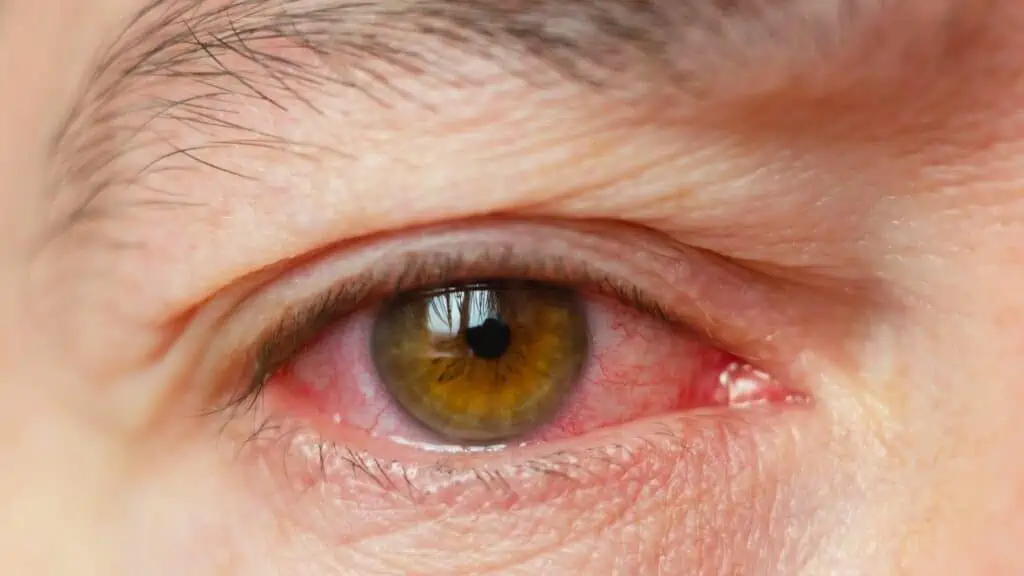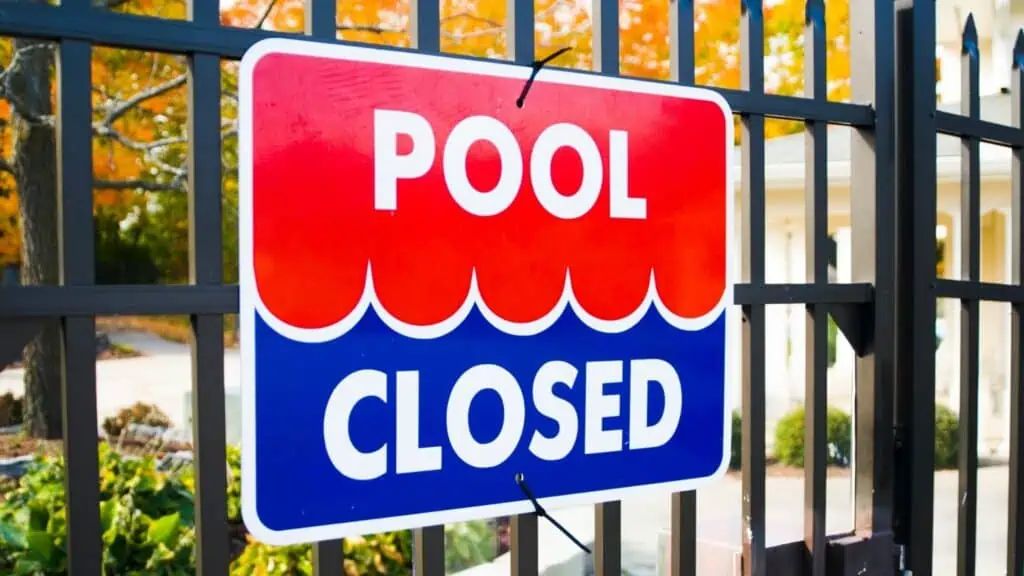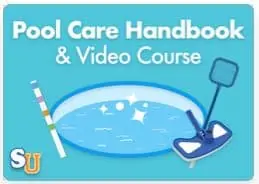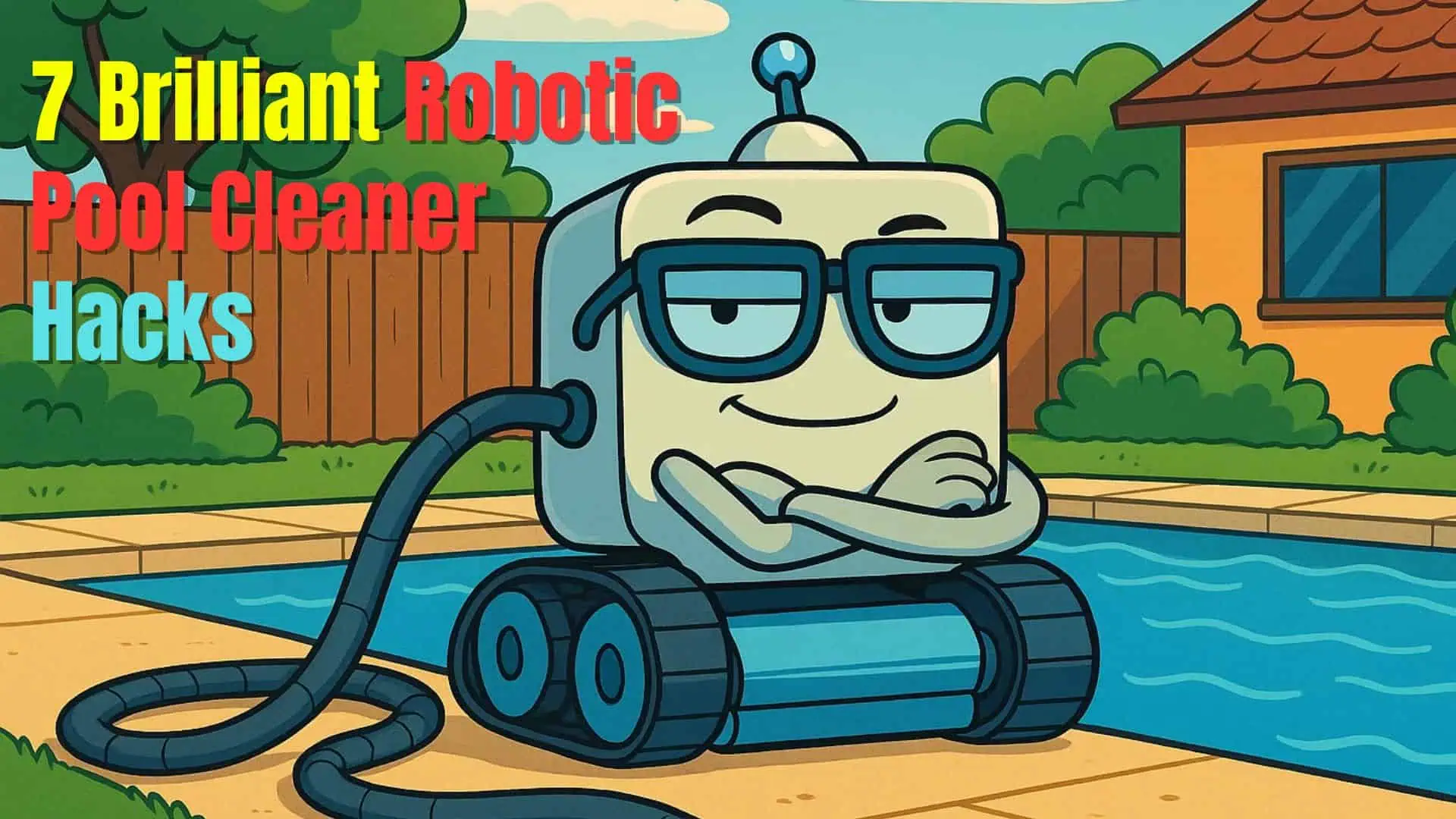Pool shock treatment is a high chlorine concentration designed to kill micro-organisms and organic waste.
The problems you might face from entering a very recently shocked pool depend on how high the free chlorine level is. Everything from your clothes to your body and internal organs could be at risk due to high chlorine levels.
Most pool owners know to wait until the chlorine levels have dropped before swimming. Still, if someone accidentally swam in a shocked pool, the obvious thing to do is immediately shower in fresh water to remove as much chlorine as possible.

What Happens if You Accidentally Swam in Shocked Pool?
What happens if you swim in a shocked pool by accident can vary from person to person. Some people are more sensitive to higher chlorine levels than others. However, the following can happen when swimming in recently shocked swimming pools where the free chlorine levels are still high.
Read also The difference between free chlorine, total chlorine and combined chlorine
Skin Problems
Your skin is the body’s largest organ and the first thing that comes into contact with water when you enter a pool.
Chlorine is designed to dissolve tissue, including skin. So jumping into your pool’s water with a lot of chlorine will not be pleasant.
The chlorine disintegrates and dissolves the topmost layer of skin. This is why you get that burning, skin irritation sensation when you enter a pool with too much chlorine. What is happening is that the chlorine is withdrawing water from the skin, dehydrating it, and then killing the dry matter that remains.
This can be even more dangerous if you already have sensitive skin or an ongoing skin problem. For instance, dandruff is a common problem where the skin is weak, dry, and constantly flaking off – meaning that the less developed skin layers underneath are exposed. Without a swimming cap, your scalp will soak up all those harmful chemicals, and things can get very uncomfortable quickly. If this happens, get out of the pool immediately.
The same applies to other parts of your body where the skin is already very thin. In this case, you will see rashes in areas like the lips, groin region, or armpits. This can get worse directly after a pool shock when more chlorine is in the water than usual.
Eye Discomfort

Since chlorine dehydrates things and makes them lose their pliability, your eyes must be constantly moisturized. There is a thin layer of water covering the entire eyeball. When you get chlorine in your eyes, this leads to a very uncomfortable reaction.
At the same time, the eyelids and skin surrounding the eye are also very sensitive and need moisturization to remain healthy. This skin around the eye will get very itchy and dry if exposed to high chlorine concentrations.
This is why it’s always a good idea to wear goggles when swimming, especially after using pool shock.
Poisoning
Chlorine itself does not kill the organisms in pools. When chlorine is introduced to swimming pool water, the acid it creates as a byproduct is what kills the microorganisms. If you were to consume even a few gulps of water with a very high chlorine concentration, this could be fatal.
The recommended volume of chlorine in swimming pools is around 5 PPM. When the chlorine is freshly introduced to the water, its amount is easily a few hundred times that of 5 PPM. Accidentally drinking the water is very dangerous.
In this case, the first thing to do is get in touch with a doctor immediately.
Digestive Problems
When you accidentally drink swimming pool water, it goes through your regular digestive tract and impacts everything you encounter. Under normal circumstances, this isn’t a problem, but it could be when you have just used pool shock, so the chlorine level is high.
You will first feel this impact in your stomach and gut, resulting in severe cramps, aches, nausea, dizziness, and diarrhea.
If you feel like you are going to throw up, don’t hesitate; this will help eliminate some of the toxins in your digestive system. Some would even suggest that you induce vomiting.
The next thing to do is to drink lots of water. This will help dissolve and dilute the chlorine in your system and flush it out faster. If you feel like the symptoms are not going away or the pain and sickness are getting worse, definitely get in touch with a medical professional.
Be sure to take action before it is too late, as the chlorine intake can lead to poisoning in your digestive tract.
Lungs
When you go near pure liquid chlorine or even water with too much chlorine, you can smell the fumes released by chlorine. These can be extremely dangerous for your lungs. When they get into your airway, they not only impact your entire nasal passage but are very irritating to the inner lining of the lungs as well.
This can cause wheezing when you breathe, constrict your ability to breathe, and result in severe coughing and sneezing. In severe cases, your lungs can begin to get inflamed on the inside.
If you already suffer from a breathing problem, like asthma, the fumes can aggravate the problem and worsen it.
If you breathe in these vapors, get away from the area quickly and try to get fresh air to help remove them from your lungs.
Clothes
Chlorine behaves just like bleach when it comes to clothes. It completely rips out the color or, at the very least, fades them. Chlorine can also destroy the structure of the fabric itself.
If you are wearing nice swimming shorts, they will lose their color, elasticity, and pliability. Swimming gear such as a head mask, a pair of goggles, or flippers can also be impacted. Many of these products are made from a rubbery plastic or silicone that can degrade when they come into contact with very potent chlorine levels.
Long-term impact of pool shocking agents
For some people, exposure to chlorinated water in a swimming pool is a regular part of life. Professional swimmers, for example, are at a higher risk of chlorine-related problems.
A prominent result of exposure to chlorine is the inflammation of the skin and a worsening of surface-level problems.
If you have a skin rash or sensitive skin in any part of your body that is already damaged or weak, exposure to harsh chlorinated water can have a negative permanent impact.
Chlorinated water releases fumes into the air from the acid that is produced and long-term exposure to these fumes can also cause breathing problems. People who already have asthma or a similar breathing problem will find their breathing getting worse.
In extreme cases, exposure to a high chlorine concentration severely impacts the internal organs and various parts of the body. Many studies have shown that exposure to a repeatedly high chlorine level can even cause cancer.

How long do you wait to swim after shocking a pool?
You certainly do not swim immediately after shocking pool water. How long it takes before you can swim in a recently shocked pool depends on the type of chemistry being utilized, the number of chemicals utilized and the size of your pool.
If you have just shocked your pool, it is normal to allow at least eight to twelve hours for the chlorine to settle and get diluted. The pool pump should be run constantly during this time.
Sometimes it is necessary to allow at least 24 hours before you can safely swim in it.
See How long after shocking a pool can you swim?
How often should I shock my pool?
The frequency with which you clean depends on how extensively you use it and how dirty it gets. The general rule here would be once a month during the swimming season.
Be sure to use the right amount of pool shocking chemicals because it varies according to the size of your pool. The bigger the pool, the more chlorine you need, and vice versa.
For more information on how often to use pool shock in a swimming pool read – How often to shock a pool
Testing the water after using pool shock
Every pool owner should have a pH testing kit to test the water after a pool shock treatment. A test strip will help you ensure that the pH is safe for you to use and show you how effective your pool shocks have been. Of course, checking the pool calcium hardness is also important.
You can get very inexpensive pH test strips that you can simply dip into the water to see the pH level. If you want a detailed breakdown of the water’s properties, several specialized testing devices are available.
What is pool shock?
Pool Shock is a chlorine product that you add to your pool water to keep the swimmer safe. The aroma can be strong and unpleasant.
Since ancient times, chlorine-based treatments have been used when ancient Romans used them to purify and disinfect their drinking water. Pool shock is a chlorine-based treatment added directly into the pool, usually after it has been filled with water for swimmer safety.
The main ingredients in pool shock are sodium hypochlorite and calcium hypochlorite. This chemical allows your pool to remain clear without algae or bacteria growth. It also helps sanitize swimsuits and other objects that come into contact with the chlorinated water during swim time, provided you’re using enough of it!
Non-chlorine shock
Another way to go is to try a non-chlorine shock using alternative pool shocking techniques (oxidizing shock) and pool shock chemicals, such as potassium monopersulfate. Since these treatments do not contain chlorine, many opt for them. The sunlight doesn’t burn the active ingredients; you only have to wait 15 minutes before jumping into the pool.
For more information on pool shock chemicals used in swimming pools please read – What does pool shock do? and When to shock a pool






Leave a Reply